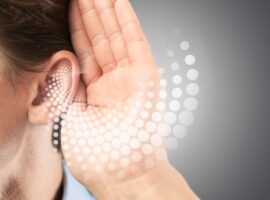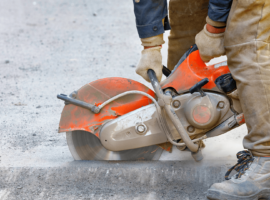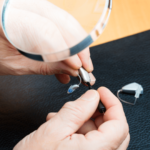Proper care and maintenance of hearing aids can significantly improve their performance and lifespan. Since they are small, delicate devices, they can become damaged by daily wear and tear. Routines to avoid such damage should include regular cleaning, protection from the elements, battery maintenance, proper storage, and professional checkups. Whether your hearing aids are new or well-worn, the following care techniques can maximize their longevity.
Daily Care Rituals
Hearing aids are frequently exposed to substances like earwax, dust, and moisture. Since they are used daily, they need to be cleaned regularly. Ongoing cleaning will prevent the build-up of debris, which can block the sound or affect the sensitive parts within the device.
Wipe the hearing aid with a soft, dry cloth on a daily basis. Do not get the hearing aid wet, because water can ruin its electronic components. For stubborn buildup, a hearing aid brush (a specially designed device to be used to clean hearing aids) is useful. Hearing aids or their cleaning kits often come with such a brush. Remember also to wipe any attached earpiece mold or dome as well. They can typically be cleaned with a cleaning cloth and an ear mold cleaning spray.
Protecting From Water
Water has no business being around electronics. Humidity and the occasional splash of water are all normal exposures for hearing aids. However, they are not designed for prolonged or frequent exposure, so steps must be taken to limit such contact.
One option to remove humidity trapped inside the devices is to use a hearing aid dehumidifier.. Such tools absorb moisture slowly and evenly, making them ideal to use overnight. Without a dehumidifier , placing hearing aids in a safe, dry location when not in use is acceptable..
Changing Batteries
A hearing aid is only as good as its power source. Batteries that haven’t been replaced or charged on time will result in loss of sound quality or even failure of the device.
When replacing batteries, wash and dry one’s hands to prevent moisture or dirt from coming into contact with the device. Do not leave unused batteries in a hot, humid place to discourage early draining or corrosion. Additionally, if a hearing aid is not going to be worn for an extended period, battery removal will preserve its life.
Symptoms of draining battery life typically include diminished sound or device interruptions on a continuous basis. The availability of spare batteries are convenient whenever such issues like these are noticed.
Earwax Buildup Treatment
Earwax is perhaps the most common hearing aid complication. Although harmless and natural, when earwax accumulates, it will block sound and hinder the functioning of the device.
Most hearing aids come with a small instrument for removing earwax. This is to help clean openings without compromising the device in any way. When possible, exchanging wax filters stops blockage and allows for better sound clarity.
Handling and Storing Hearing Aids
Proper handling and storage of hearing aids contribute to their general performance. Although most devices are shock-proof, one should take care to not drop them on hard surfaces. Repeated falls can force internal components out of alignment and even damage the casing. When not being worn, place hearing aids in a case to protect them. A protective case likewise prevents them from being accidentally damaged or misplaced. Avoid leaving them in direct sunlight or cars where they may experience too much heat. Storing them in r bathrooms is not ideal due to humidity and moisture.
Scheduling Professional Maintenance
Even with the best of daily care practices, regular professional visits are highly recommended. Hearing aid professionals can clean, repair, and fine-tune hearing aids to get the most out of them.
Professionals also detect issues during regular check-ups that would not show up with normal cleaning.. Regular check-ups not only enhance performance but also extend the life of the device.
Establishing Consistent Habits
Finally, maintenance of the hearing aids is made easy with regular, consistent care. Simple daily routines, like checking cleanliness or storing, can greatly reduce the risk of developing problems.
Consistency prevents larger repair issues and overall time spent on more serious maintenance. Having such routines in place ensures hearing aids deliver clear sound and function effectively.
Conclusion
Hearing aid maintenance encompasses cleanliness, storage, and regular professional servicing. Such simple and efficient measures ensure prolonged satisfaction and performance. Following a routine will allow your hearing aids to improve your quality of life for years to come.





